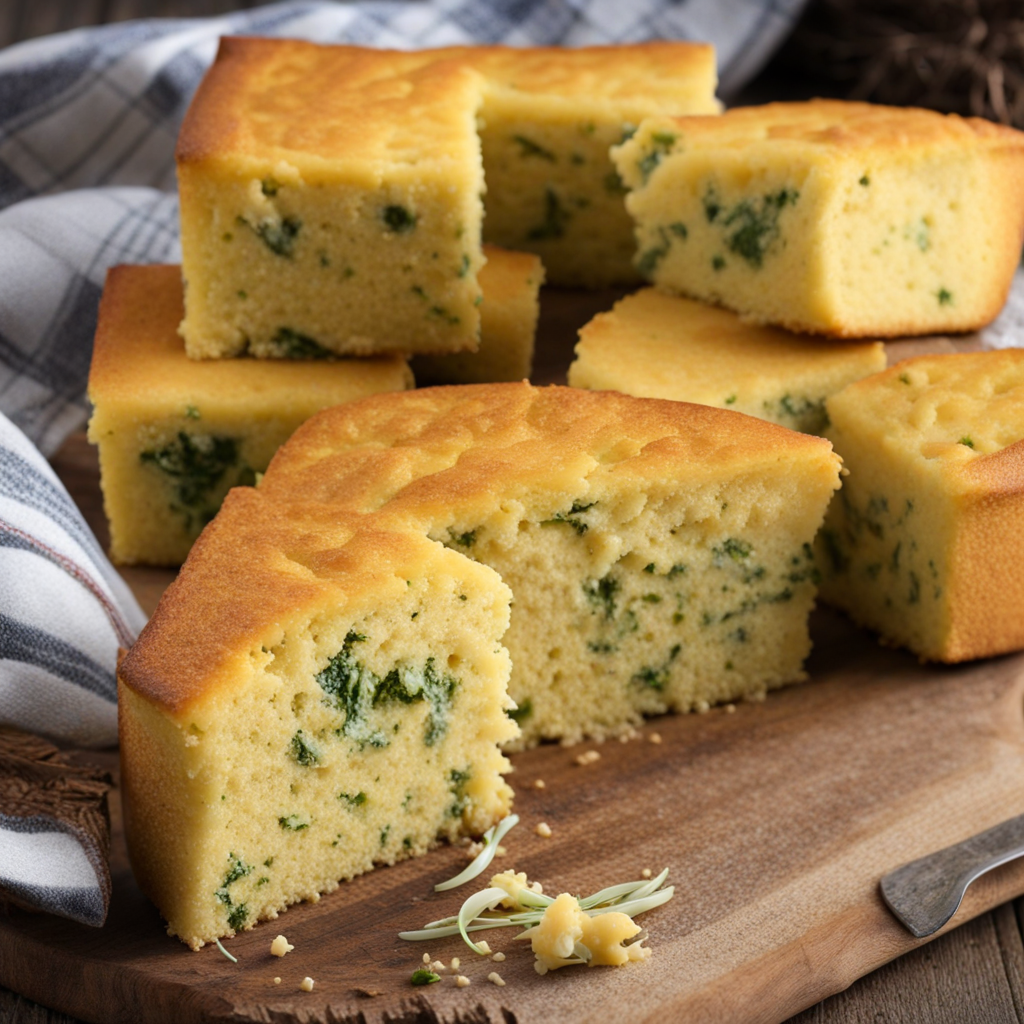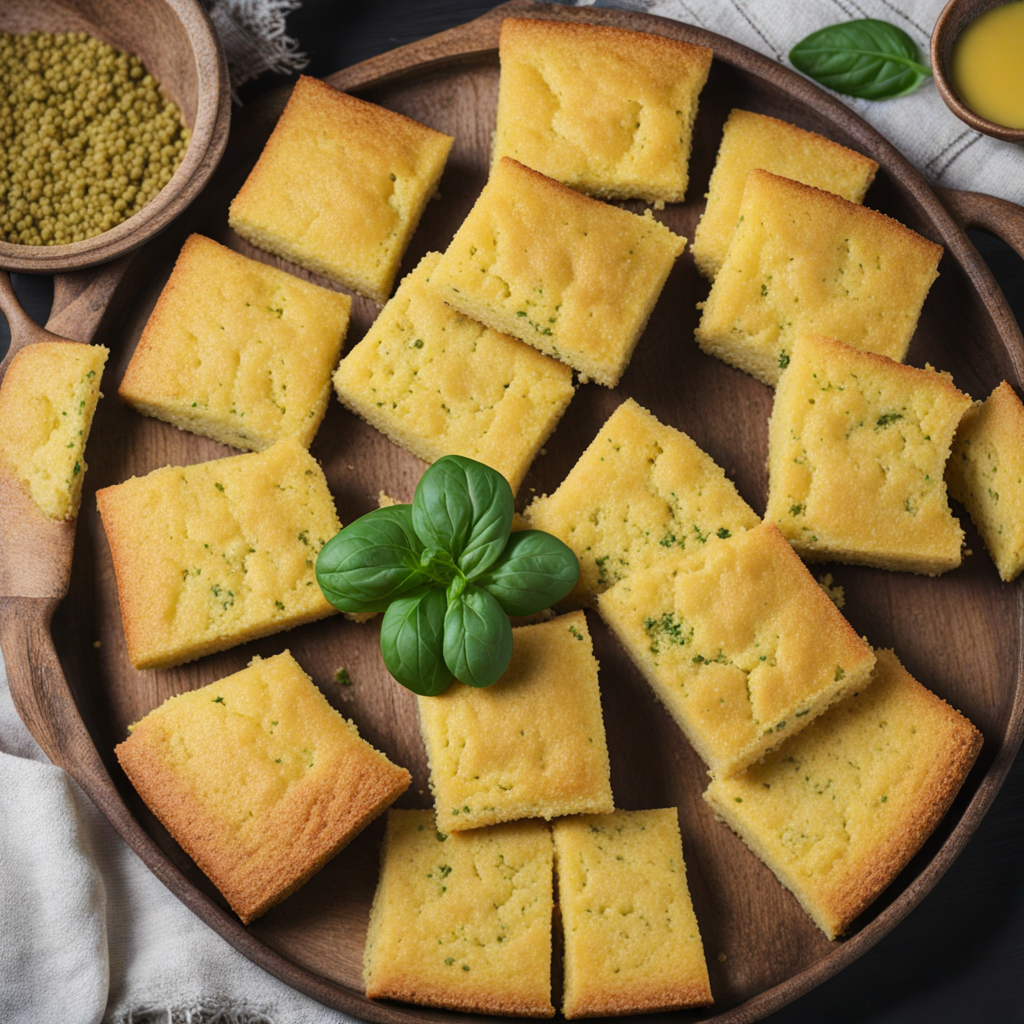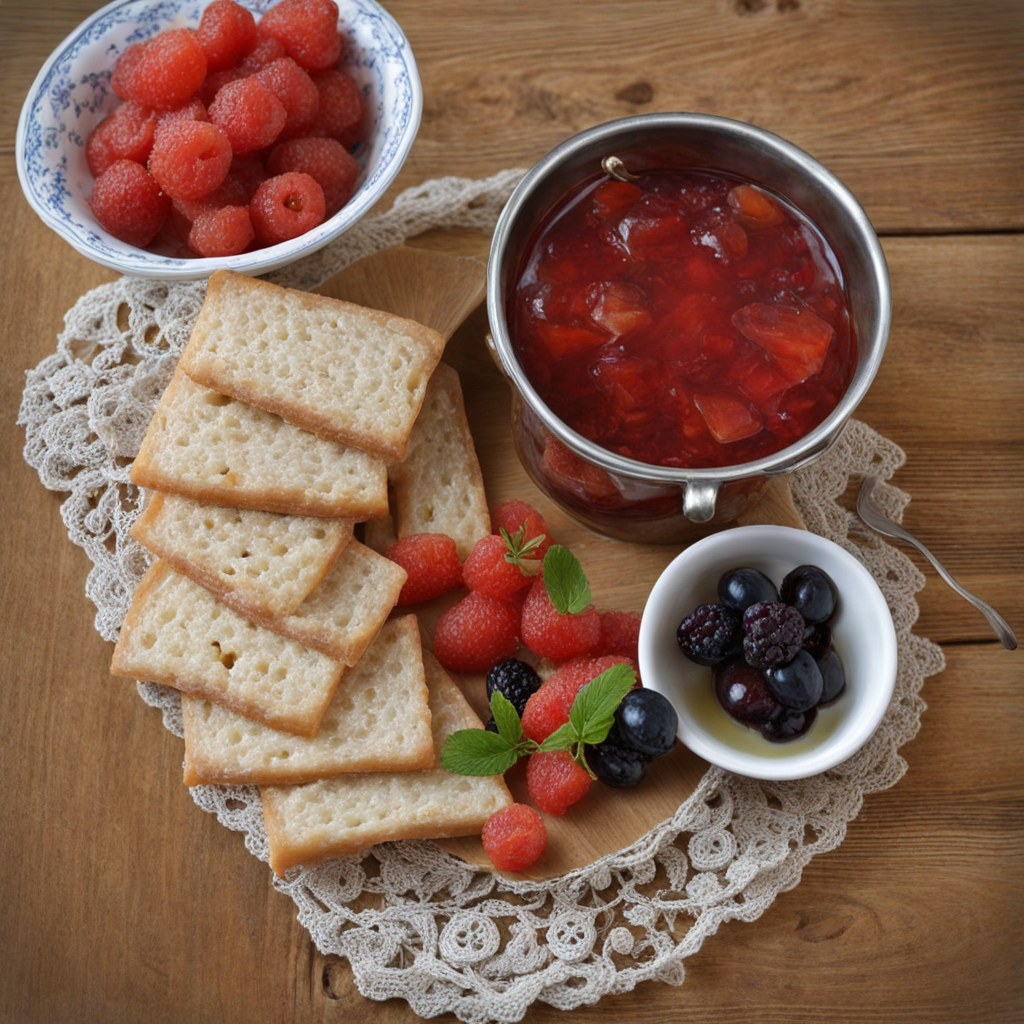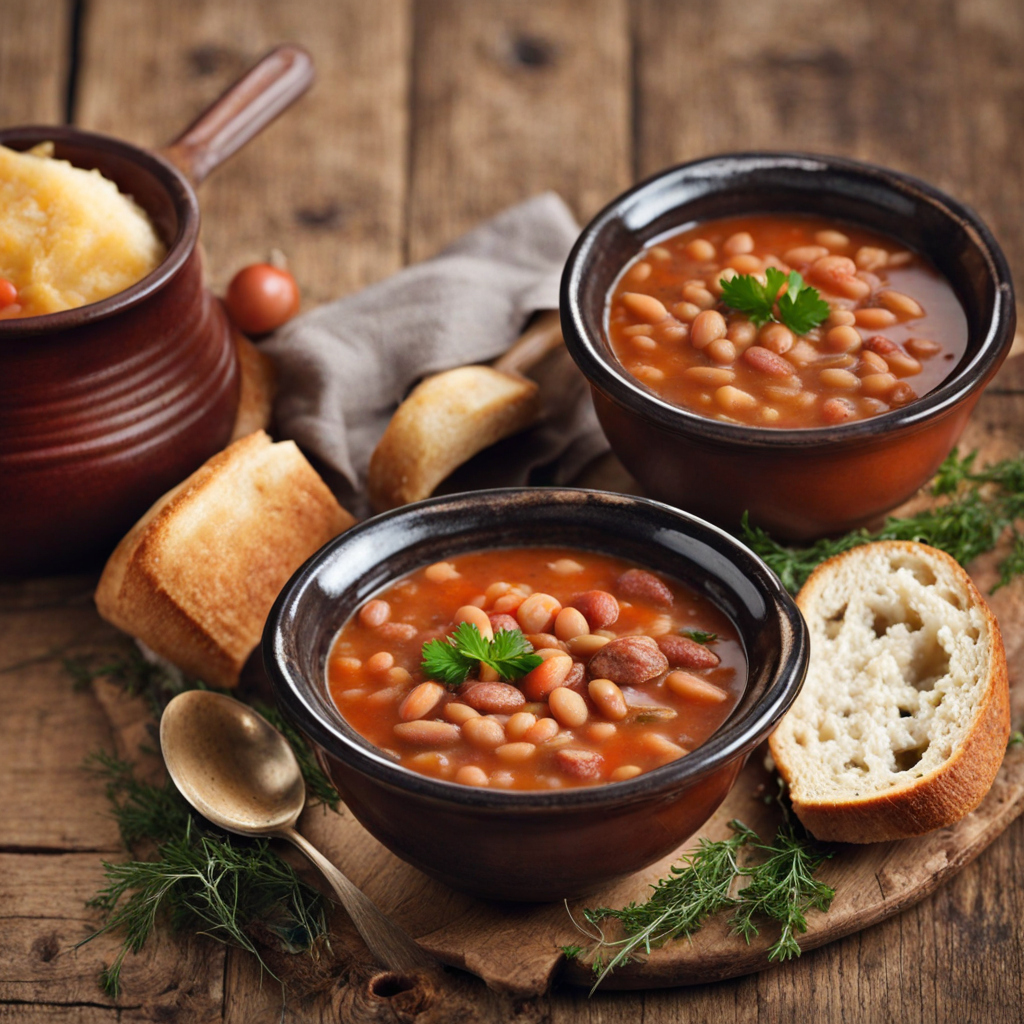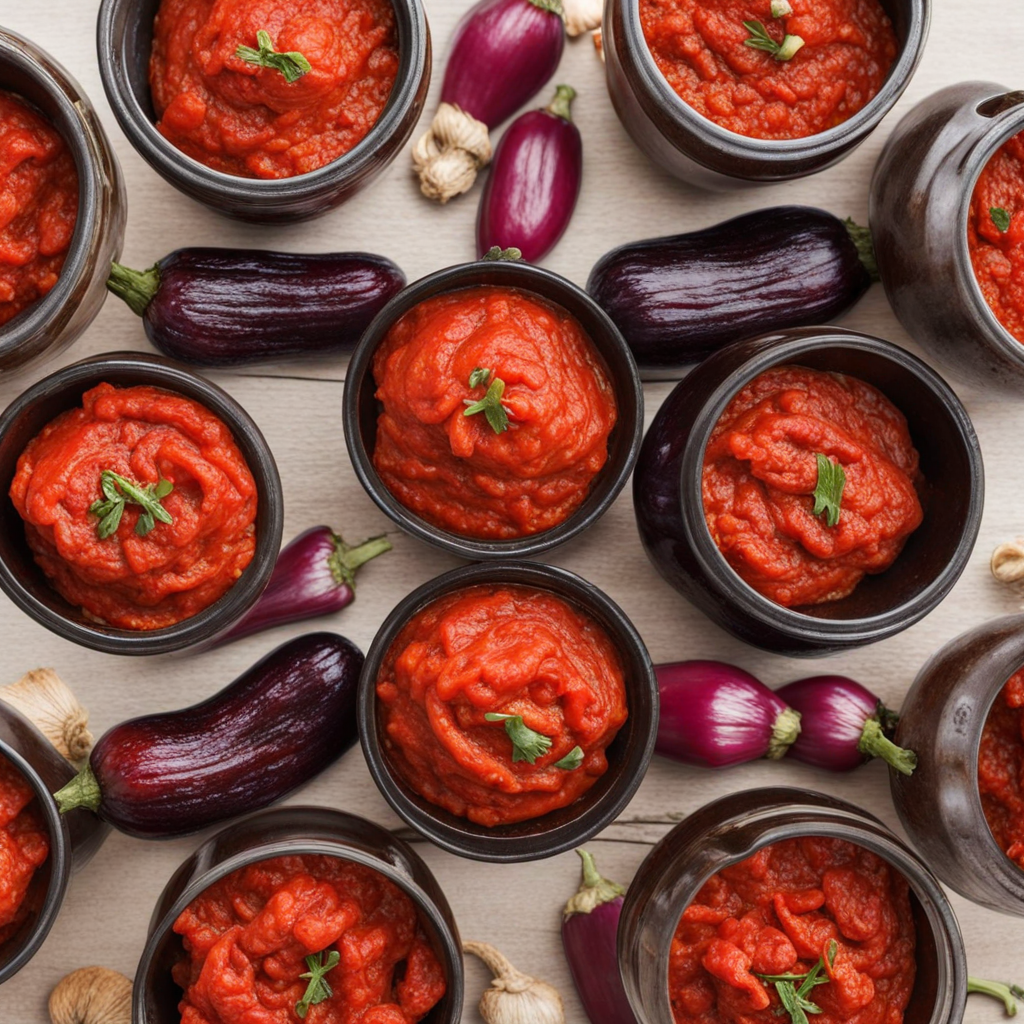Proja
Proja is a delightful Serbian cornbread that embodies the rustic charm of traditional Balkan cooking. Made primarily from cornmeal, it is a simple yet satisfying dish that captures the essence of home-cooked meals in Serbia. The texture is slightly dense yet tender, with a golden crust that gives way to a moist and flavorful interior. This cornbread is often enhanced with ingredients like yogurt or cheese, which add a creamy richness and a savory depth to the overall flavor profile, making it an irresistible accompaniment to many dishes. The preparation of Proja is straightforward, allowing the ingredients to shine through. The cornmeal is mixed with water, salt, and sometimes baking powder to create a batter that is poured into a baking dish and baked until perfectly puffed and golden. Some variations also incorporate finely chopped onions or herbs, which introduce additional layers of flavor. The result is a warm, comforting bread that can be enjoyed fresh out of the oven or at room temperature, making it versatile for any occasion. Proja is often served as a side dish alongside hearty stews, grilled meats, or simply enjoyed on its own with a slather of butter or a sprinkle of cheese. Its wholesome and slightly sweet taste pairs beautifully with the robust flavors of Serbian cuisine, allowing it to stand out as a beloved staple. For those looking to explore new culinary horizons, Proja offers a unique taste experience that is both nourishing and deeply rooted in Serbian tradition.
How It Became This Dish
Проја: The Cornbread of Serbia Проја, a simple yet beloved cornbread, is deeply rooted in Serbian culinary tradition. Its origins can be traced back to the rural landscapes of the Balkans, where local ingredients and agricultural practices shaped the diets of the people. This humble dish not only serves as a staple food but also carries cultural significance, reflecting the history, identity, and social practices of the Serbian people. #### Origins and Historical Context The story of проја begins with the introduction of corn to Europe in the late 15th century, following Christopher Columbus's voyages to the Americas. Corn, or maize, quickly adapted to the warm climates of Southern Europe, including the Balkans. As a result, it became a fundamental crop for many rural communities, particularly in Serbia. Traditionally, проја was made from coarse cornmeal, water, and a pinch of salt. The simplicity of its ingredients speaks to the agrarian lifestyle of the Serbian peasantry, who relied on what they could grow or access locally. Wheat, which was more labor-intensive to grow and process, was often reserved for special occasions, while corn became a staple in everyday meals. This transition reflects broader agricultural practices in the region, where the availability of crops directly influenced dietary habits. In Serbian households, проја was often baked in a traditional oven called a "печница" or cooked in a simple cast-iron pan over an open fire. The bread's crusty exterior and soft interior made it a perfect accompaniment to various dishes, particularly stews, meats, and cheeses. It was also enjoyed on its own, often dipped in yogurt or accompanied by homemade preserves. #### Cultural Significance Проја is more than just a food item; it embodies the spirit of Serbian hospitality and communal living. In rural communities, bread holds a sacred place in cultural practices and rituals. It is common for families to gather around a table where проја is served, reinforcing bonds and creating a sense of belonging. The act of sharing food is integral to Serbian culture, and проја often features prominently in family gatherings, celebrations, and holidays. The bread also symbolizes resilience. Historically, Serbia has faced numerous challenges, including wars, political upheaval, and economic hardship. In times of scarcity, проја served as a source of sustenance, allowing families to stretch their resources. Its durability and simplicity made it an essential food that could be prepared quickly and in large quantities, ensuring that no one went hungry. Moreover, проја has a place in Serbian folklore and traditions. It is often associated with various customs, such as the "Slava," a Serbian Orthodox celebration of a family's patron saint. During Slava, families prepare a special loaf of bread, and while проја may not be the main centerpiece, it is frequently included as a side dish, symbolizing hospitality and gratitude. #### Development Over Time As Serbia modernized throughout the 20th century, the preparation and consumption of проја evolved. Urbanization led to the decline of traditional farming practices, and while many people moved to cities for work, they carried their culinary heritage with them. In urban settings, проја began to appear in restaurants and bakeries, often made with variations that incorporated modern techniques and ingredients. The rise of tourism in Serbia has also played a significant role in the popularization of проја outside of its traditional context. Visitors seeking authentic experiences often find themselves drawn to local dishes, and проја has become a symbol of Serbian cuisine, showcased in food festivals and culinary tours. Chefs are now experimenting with different flavors and ingredients, introducing herbs, cheese, and even vegetables into the mix, creating a fusion of traditional and contemporary styles. Despite these changes, the essence of проја remains intact. Many Serbs continue to prepare the bread in their homes, honoring the traditional recipes passed down through generations. This connection to the past is vital for many families, offering a sense of continuity and identity. #### Modern Interpretations In contemporary Serbian cuisine, проја has adapted to modern palates while retaining its cultural roots. Restaurants across Serbia feature проја on their menus, often pairing it with gourmet dishes, such as grilled meats or sophisticated salads. Additionally, this cornbread has gained recognition in the international culinary scene, where it is sometimes compared to other types of cornbread found in different cultures, such as American cornbread or Brazilian polenta. Health-conscious individuals are also revisiting проја, recognizing its gluten-free properties due to its cornmeal base. As more people become aware of dietary restrictions, проја has found a place in the homes of those seeking gluten-free alternatives, further solidifying its status as a versatile and inclusive dish. #### Conclusion Проја stands as a testament to the resilience and adaptability of Serbian culinary traditions. From its humble beginnings as a peasant staple to its current status as a cherished dish both at home and abroad, проја has woven itself into the fabric of Serbian life. It represents not only sustenance but also connection—between people, generations, and the land. In a world that often prioritizes the new and the exotic, проја reminds us of the beauty in simplicity, the importance of community, and the enduring power of tradition. As it continues to evolve, this cornbread will undoubtedly remain a beloved symbol of Serbian culture for generations to come.
You may like
Discover local flavors from Serbia


